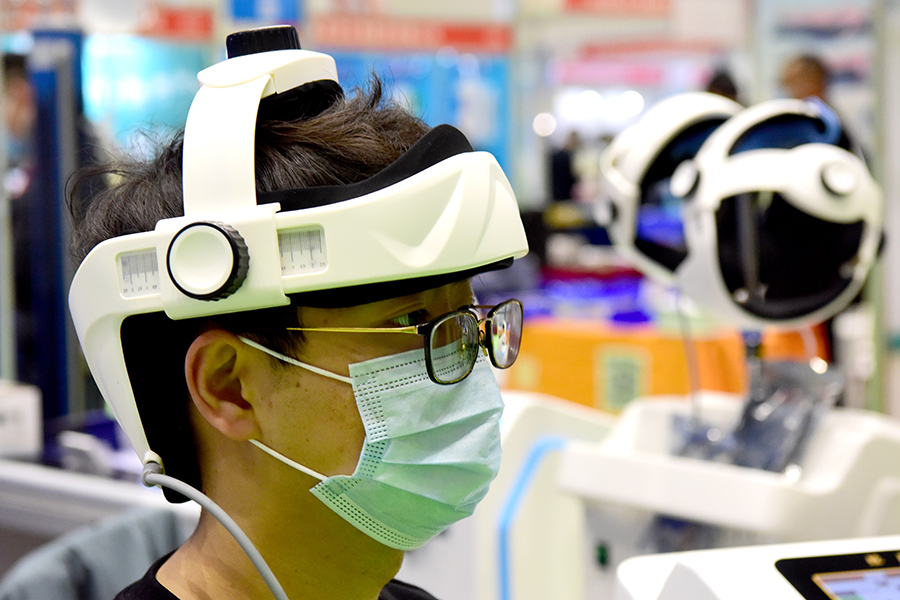Bulk-buying to innovate leading medical devices


For Gao, an acute myocardial infarction patient in Kunming, Southwest China's Yunnan province, the steep cut in the price of a coronary stent from over 7,400 yuan ($1,144) to 590 yuan came as a real blessing.
China's centralized procurement program for coronary stents, which was implemented in November, has enabled coronary heart disease patients such as Gao, a resident of a remote area, to buy the device at an affordable price.
The bulk-buying is the country's first such program in the medical device sector. The price of coronary stents is now expected to plunge by at least 90 percent, saving patients billions of yuan a year, besides shaking up the industry.
"The sharp price drop in stents from around 13,000 yuan to about 700 yuan was astonishing. One particular model now retails for just 469 yuan," said Cai Shuning, a senior medical analyst at Beijing-based tech media 36Kr.
"Provincial and municipal-level procurements preceded national-level buying under the program. Judging from the local-level situation across the nation, similar price cuts in other medical devices are expected in the near future. This will likely shake up the industry."
In July 2019, when Anhui province undertook bulk-buying of orthopedic spine implants for spine, the price of the device plunged by 95 percent.
Similarly, last year, the price of surgical staples under a joint bulk-buying program of Chongqing municipality, and Guizhou, Yunnan and Henan provinces came down by a staggering 97.76 percent, while in Jiangsu province it fell 96.29 percent.
"Centralized procurement in the medical device sector is an inevitable trend. For the enterprises concerned, a new industry logic has come into play," said Cai.
Low prices becoming a priority for the nation means that enterprises with high innovative capability and core technologies are more likely to survive and thrive, she said.
Previously, high research and development costs and patent-related issues meant that enterprises could not afford to sell medical devices at lower prices even though demand was high.
But now, under the bulk-buying program, medical device manufacturers were forced to lower the price in order to win the bid.
"Thus, enterprises with comprehensive strength, which own both mature products that can enter bulk-buying and competitive high-tech products, are also advantaged to survive, as they have a balanced product portfolio," Cai said.
Their cash flows and new investments can support R&D of new products, she said.
"Centralized procurement is actually accelerating the weeding out process of outdated medical devices. In the next round of national centralized procurement, the batch of low-end coronary stents that we are using now will probably be knocked out.
"By then, innovative coronary stent products with advanced technology will sell at a low price," said an orthopedist in a public 3A-grade hospital in Suzhou, Jiangsu province, who doubles up as a columnist with the pseudonym "Orthopedic Uncle" on Xueqiu, a Beijing-based online social media-cum-trading platform.
Terry Zang, manager of the international market strategy department at Lepu Medical, one of the companies that won a bid to supply under the national coronary stent centralized procurement program, said that bulk-buying is the biggest trend right now in the medical device sector.
"It will gradually become a norm and the trend is irreversible. Every company in the sector should start preparing to deal with change that is inevitable and imminent now."
To cope with change, Lepu Medical decided to dig deeper into the field, improve its products and enhance R&D, to bring advanced products and services to patients at reasonable prices.
In terms of R&D, the company has been promoting innovations in its core products, including biodegradable stents, transcatheter aortic valve replacement, and cryoballoon ablation to proactively embrace change without waiting for change to be introduced by public healthcare policies, Zang said.
"Meanwhile, as a comprehensive medical enterprise, to deal with the changes brought by centralized procurement, we expanded and enhanced our blueprints in other subcategories. We are also actively exploring the international market.
Just like in dealing with water, you may dig the canal deeper, or you may widen the canal, or explore new canals altogether."
"Advanced technology speaks for itself. The nation's centralized procurement of medical devices is weeding out companies with weak comprehensive capabilities and forcing those strong to keep innovating and bring better products to patients," Cai from 36Kr said.




































